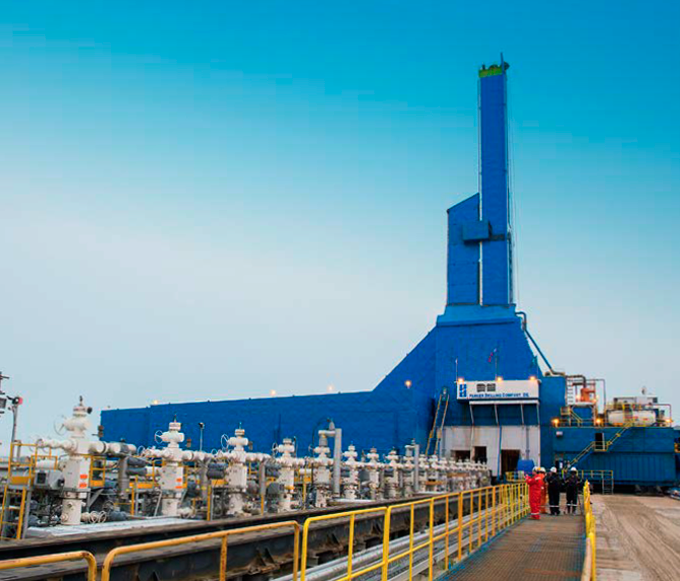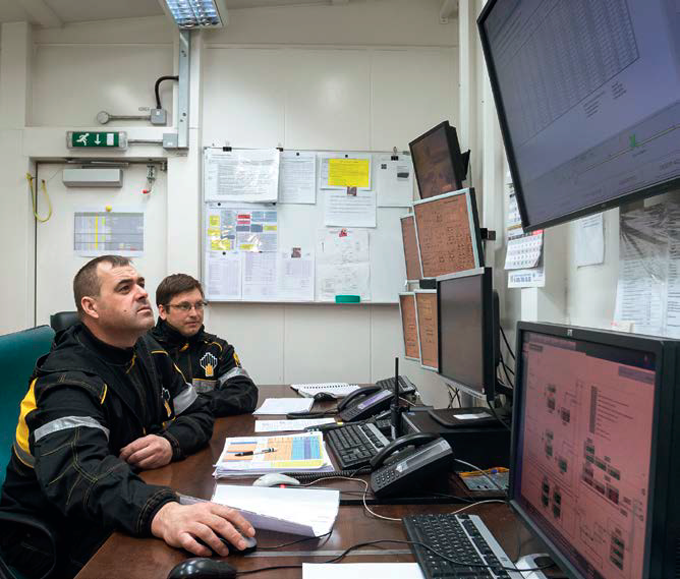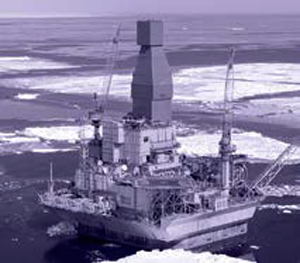Offshore Production Projects
Sakhalin-1
a well with the longest borehole IN THE WORLD DRILLED UNDER SAKHALIN-1 PROJECT
2D SEISMIC OPERATIONS AT RUSSIAN OFFSHORE PROJECTS IN 2015
Sakhalin-1 is the first large-scale offshore project implemented in the Russian Federation under PSA (effective from 1996).
Sakhalin-1 develops three fields, including Chaivo, Odoptu, and Arktun-Dagi located on the north-eastern shelf of Sakhalin Island.
Oil and condensate production under Sakhalin-1 exceeded
8.3 mmt in 2015. Consumers in the Russian Far East received over 2.3 bcm of gas. Project fields (Chaivo, Odoptu, and Arktun-Dagi) have been developed using cutting-edge methods and technologies.
In January, 2015 the first oil volumes were produced in the Arktun-Dagi field started up in 2014 by Rosneft and ExxonMobil as part of Sakhalin-1 Consortium from unique stationary Berkut platform. Three oil wells were drilled from Berkut platform as of December 31, 2015.
Berkut is a unique drilling platform. The world’s offshore float-on installation record was set when installing the platform.
In April 2015, a new world’s record was set under Sakhalin-1 with the longest well drilled by Rosneft in the Chaivo field as part of Sakhalin-1 Consortium.
This well continues successful implementation of our outstanding project. I am grateful to ExxonMobil, our partner, for using the drilling technology making that achievement a reality».
Igor Sechin Chairman of Rosneft Management Board
O-14 production well was drilled towards the edgeof the South-Eastern tip of the field from Orlan drilling platform. The well is the longest one (13,500 m) having a horizontal section
of 12,033 meters.
Orlan platform was fully installed in July 2005 and drilling started in December 2015. The platform requires the minimum number of product treatment structures , as extracted crude oill supplied to the Chaivo onshore processing facility. Steel and concrete drilling facilities with living quarters are used to develop the southwestern and southeastern parts of the Chaivo field. Orlan’s steel and concrete base is fit to resist ice and gigantic ice ridges rising up to a height of a six-floor house.
Northern tip of the Chaivo field
2 mmtoe aggregate oil production at the northern tip of Chaivo field reached upon 14 month only after the first well launching
In September 2014, the Company launched of the northern tip of the Chaivo field within a shallow area of the northeastern Sakhalin shelf.
The President of the Russian Federation launched the field operation during his teleconference with the President of Rosneft’s Management Board which was also attended by the Minister of Energy of the Russian Federation.
The third oil well (NC-3, 9570 m downhole) was put into operation in 2015 according to the accelerated schedule and drilling of NC-4 well (10 486 m downhole) was finished.
The wells in the northern tip of the Chaivo field have a unique complex design with an extended reach.
Actual oil production in 2015 totaled 1926 kt. The cumulative volume of gas delivered to the Khabarovsk territory in 2015 amounted to 218.4 mmcm.
On November 28, 2015, Rosneft produced the two millionth ton of oil in the northern tip of the Chaivo field only fourteen months after the start-up of the first well.
Oil production in the northern tip of the Chaivo field takes place from three unique wells with average total production exceeding 7 th. tpd in late 2015.
The field, similarly to Sakhalin-1 project, contains light SOKOL oil. SOKOL is unique oil with a very low sulfur content of 0.25 % and density of 36.8 degrees API, allowing to sell this oil at a premium to Dubai and Oman benchmarks.
RESULTS OF OFFSHORE EXPLORATION IN RUSSIA

Rosneft completed exploration works at its offshore licensed areas in the Russian Arctic, Far East and southern offshore in 2015.
2D seismic surveys:
The actual completed amount was 20434 line km in six license areas of the Arctic shelf.
3D seismic surveys:
The actual completed amount was 1183 sq.km in six license areas, including 800 sq.km in the Arctic shelf and 383 sq.km in the Russian Far East (four LA).
Geochemical (helium) survey:
Geochemical (helium) survey was performed in the East Pribrezhny license area in the Sea of Okhotsk with 1300 physical observation points.
Field geological expeditions:
A field expedition was organized to explore the islands in Novaya Zemlya and Franz Josef Land archipelagos in the Barents and Kara Seas in order to collect rock material to study the quality of oil and gas parent rock and reservoir and reduce geological risks in the Company’s license areas in the West Arctic shelf.
Regional projects:
The regional databases with geological and geophysical data for the shelves of the Russian Arctic, Far East, and southern seas were updated. Geological risks and uncertainties during planning and exploration were mitigated by improving regional shelf geology models, updating oil-and-gas content forecasts, including updates to oil and gas systems on Company license areas. The results of this work formed the basis for project ranging. Recommendations were prepared on exploration plan short- and mid-terms adjustments, and subsoil licensing plans were updated.
Geotechnical surveys:

Geotechnical surveys were completed at two sites1 in the South Russky license area in the basin
of the Pechora Sea. Rosneft and Statoil joint ventures completed geotechnical surveys at two sites
for exploration drilling purposes to be launched in 2016 in Magadan-1 and Lisyansky license areas in the basin of the Sea of Okhotsk.
Environmental monitoring:
The environmental monitoring included the survey of 12 earlier drilled wells in the basins of the Pechora, Barents, Kara Seas and the Sea of Okhotsk (South Russky, Pomorsky, West Prinovo zemelsky, Medyn-Varandeisky, Magadan-1, and East Prinovozemelsky license areas).

